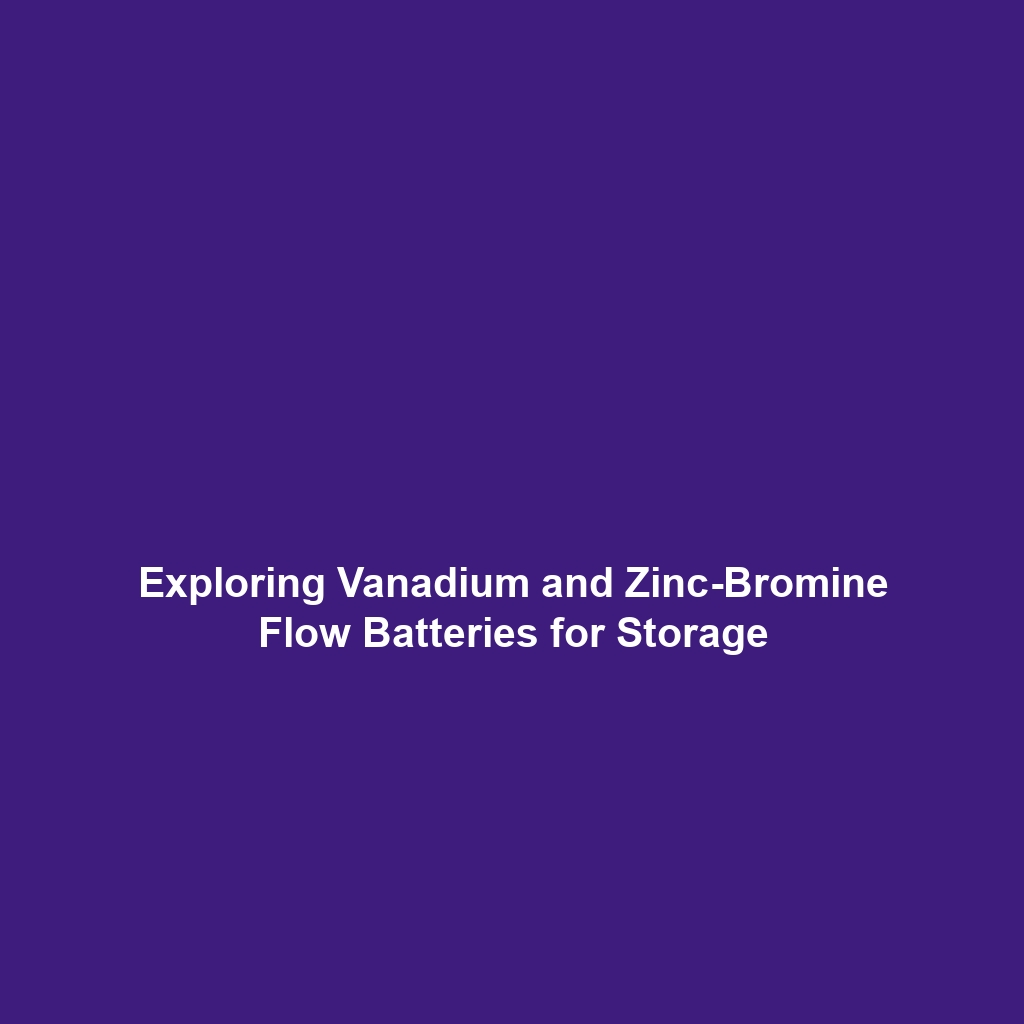Advancements in Battery Technology: Vanadium Redox and Zinc-Bromine Flow Batteries
Introduction
In the realm of Battery Technology, the development of flow batteries represents a significant advancement, particularly with systems like vanadium redox flow batteries and zinc-bromine flow batteries. These technologies are being actively developed for large-scale energy storage systems, crucial for renewable energy integration and grid stability. As the world increasingly shifts toward sustainable energy solutions, understanding the importance of these two types of flow batteries is essential. This article explores their key concepts, applications, challenges, and the future of battery technology.
Key Concepts
Vanadium Redox Flow Batteries
Vanadium redox flow batteries (VRFB) operate on the principle of redox reactions involving vanadium ions. Their ability to separate energy storage and power generation allows for flexible scaling, making them suitable for large-scale applications.
Zinc-Bromine Flow Batteries
On the other hand, zinc-bromine flow batteries (ZBFB) utilize a chemical combination of zinc and bromine, providing a low-cost and efficient alternative for energy storage. They are particularly advantageous due to their high energy density and operational efficiency.
Applications and Real-World Uses
The applications of vanadium redox flow batteries and zinc-bromine flow batteries in Battery Technology are vast and impactful:
- Renewable Energy Systems: Both types can store energy from solar panels and wind turbines, ensuring that excess energy is used effectively.
- Grid Stabilization: These batteries help manage energy supply and demand on power grids, enhancing reliability.
- Industrial Applications: Companies are deploying these technologies to ensure uninterrupted operations and peak shaving capabilities.
Current Challenges
Despite their potential, several challenges exist in studying and applying vanadium redox flow batteries and zinc-bromine flow batteries within the broader context of Battery Technology:
- High initial costs compared to traditional battery technologies.
- Limited operational lifespan and performance efficiency under certain conditions.
- Logistical and scalability issues in manufacturing and deployment.
Future Research and Innovations
Ongoing research focuses on enhancing the efficiency, scalability, and cost-effectiveness of vanadium redox flow batteries and zinc-bromine flow batteries. Key areas of innovation include:
- Developing more efficient electrolytes to improve energy density.
- Exploring advanced materials that could enhance the lifespan and reduce costs.
- Integrating AI and machine learning technologies for optimized performance management.
Conclusion
The advancements in vanadium redox flow batteries and zinc-bromine flow batteries provide critical improvements in the field of Battery Technology. While challenges exist, the path forward looks promising due to continuous research and innovation. For further insights into energy storage technologies, check out our articles on lithium-ion batteries and solid-state batteries.
